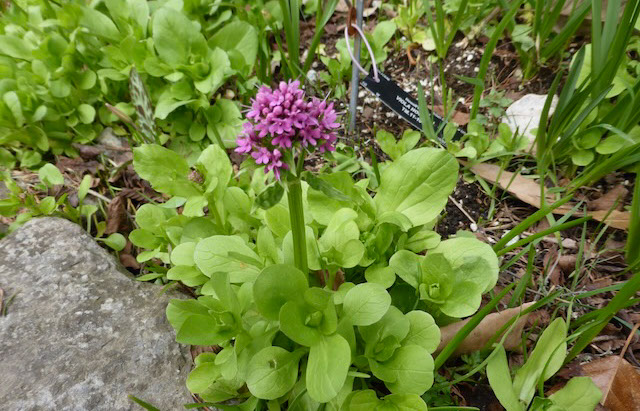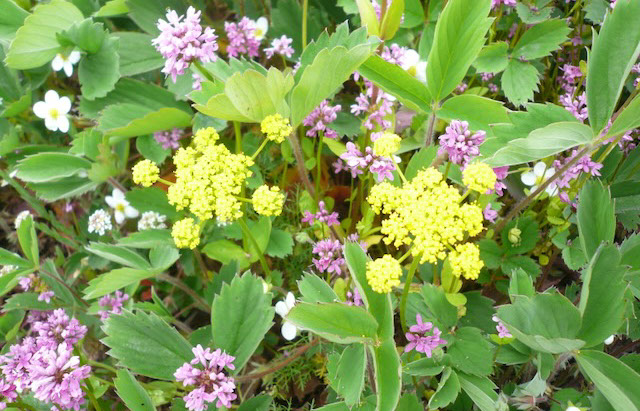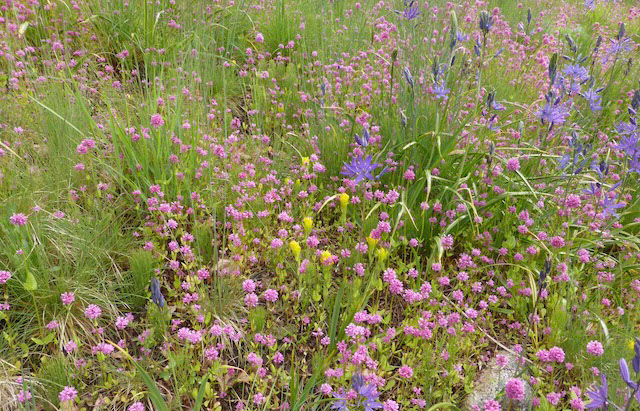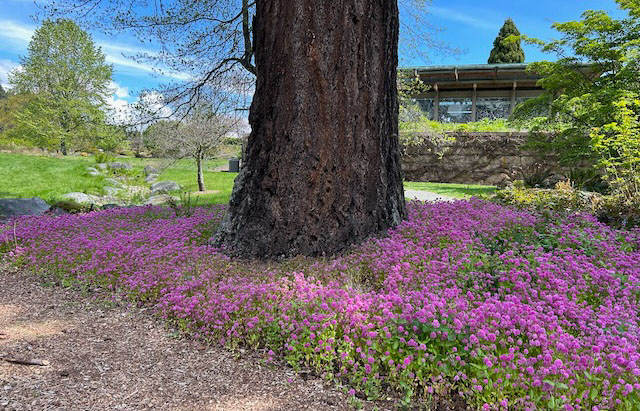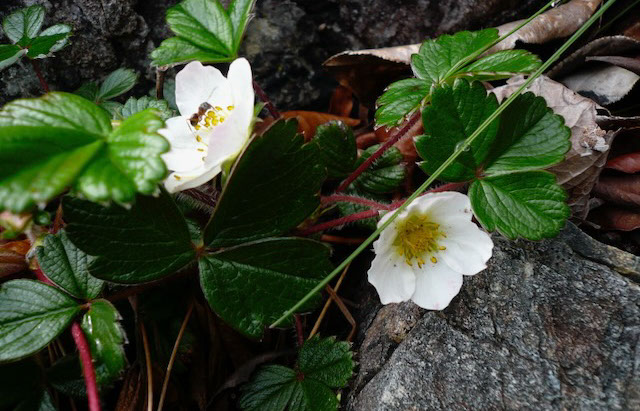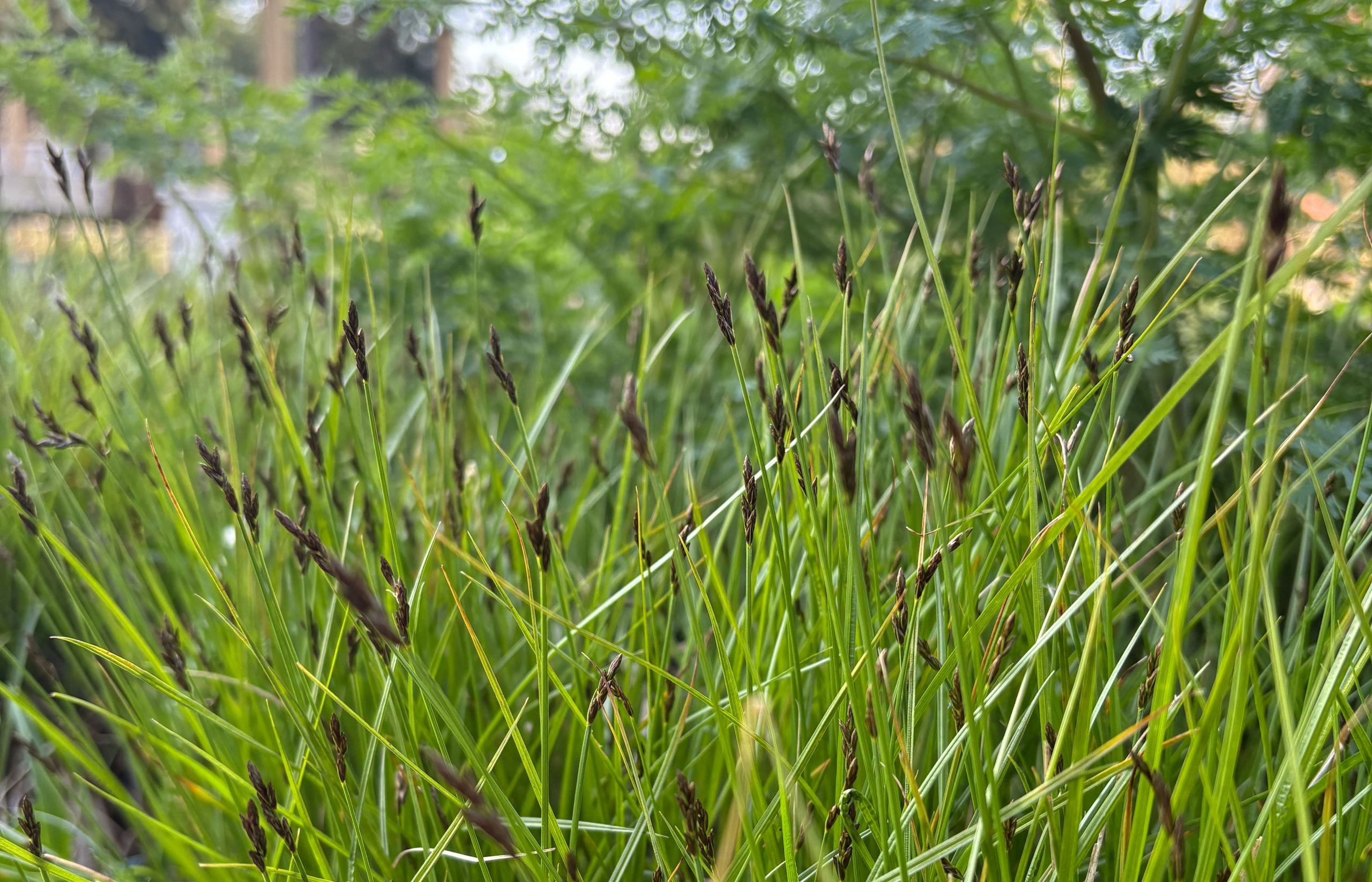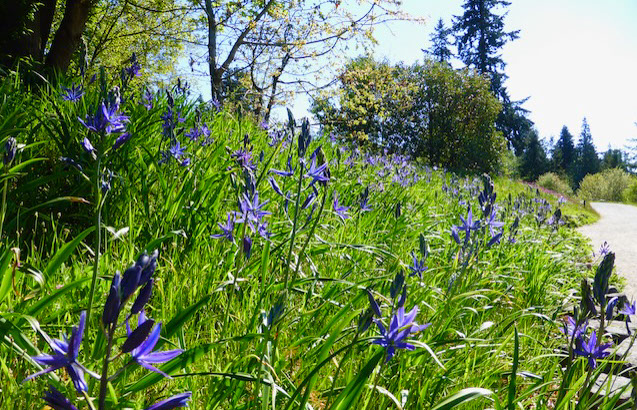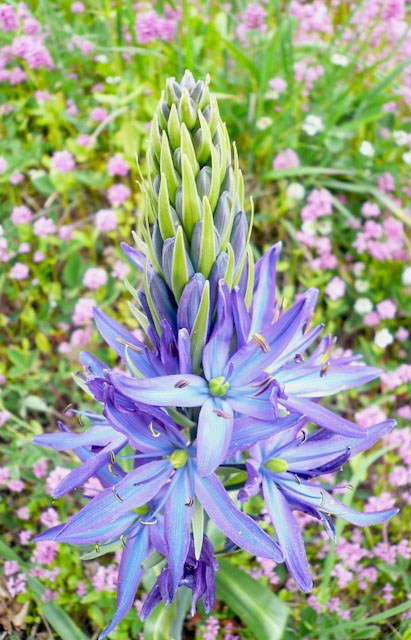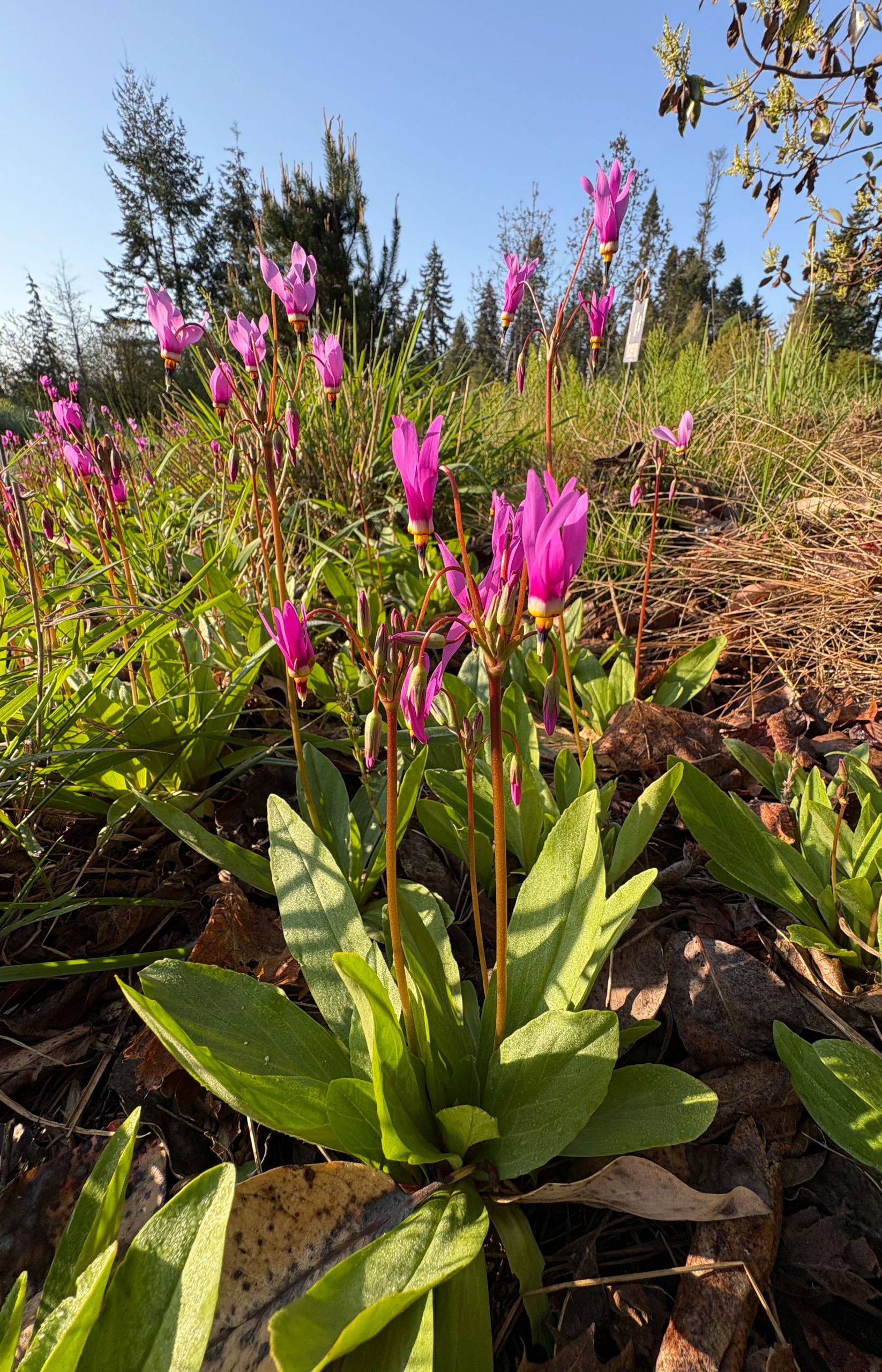
Lomatium dissectum
Twenty years ago, when the first native bunch grasses were introduced to the site we now call the Garry Oak Meadow Garden, we envisioned a self-sustaining, flower-filled meadow, rubbing shoulders with Garry oaks, arbutus, roses and other native shrubs. And thanks to the hard-working curators and horticulturalists who have shepherded the process since those early days, that is essentially what was created. Like all gardens, the result was not without significant setbacks, re-imaginings and restarts. And to be honest, the idea that any garden can be self-sustaining is a fiction. In most ways, the Garry Oak Meadow Garden is as studiously maintained as any in the Botanical Garden. Nevertheless, it seldom requires additional water, and most of the species are trouble free. If only we could prevent the weeds from blowing in… Despite all of the hurdles, the view is spectacular, and May is definitely the time to enjoy it.
The earliest plant to flower in the Garry Oak Meadow Garden is the coastal native, Valeriana congesta (sea blush) (formerly Plectritis congesta). From an initial sprinkling of seed here in 2007, this pink-flowered winter annual has become an incredibly successful self-seeder. Sea blush germinates in the autumn and overwinters as a low leaf-rosette before beginning to flower in early spring. It then sheds its seeds before eventually withering (and dying) as the weather turns hot and dry in summer. Any open ground that the sun can reach is soon exploited by this little hardy annual. In bloom, sea blush is visited by a range of pollinators, including rufous hummingbirds.
Herbaceous perennials are also common to the Garry oak ecosystem, and several in the carrot family are scattered about. The most prominent of these is Lomatium dissectum (fern-leaved desert parsley) with its radiating drumstick-like flower clusters above knee-high mounds of lacy foliage. Purple brown in bud, they open like brilliant yellow star-bursts. Lomatium utriculatum (spring gold)—much the miniature of desert parsley—is more of a ground-level constituent, filling in gaps between the sea blush and the creeping Fragaria chiloensis (beach strawberry), for example. Both the carrot relatives and strawberry produce more or less unspecialized flowers, attractive to a wide variety of especially smaller insect pollinators, because of the easily-accessed flowers with readily available pollen and nectar.
High on anybody’s list of attractive flowers are the columbines. Aquilegia formosa (Sitka or western columbine) is much prized for its bicolored flowers. A hummingbird favourite, the red and yellow flowers hang on wire-like stalks. These colourful mid-air feeding stations provide high-sucrose nectar to keep birds humming. Less popular with the hummingbirds, but no less attractive in the Garry Oak Garden, are a couple of native Primula species known as shooting stars (formerly and more familiarly as Dodecatheon). The earlier blooming of the two, Primula hendersonii (broad-leaved shooting star) was a significant feature in April, but May brings out the similar, but smaller and narrower-leaved Primula pulchellum (pretty shooting star).
Among the various geophytes, forbs and graminoids that inhabit the Garry oak ecosystem, there is little doubt that Camassia leichtlinii (great camas) is the showiest of all of them. A true bulb, traditionally cultivated and harvested for food by local First Nations, the above-ground portions of the plant are impressive, to say the least. Spires of purple-blue star-shaped flowers rocket upwards to a metre or more in height in May. And let’s just say that there are very many plants of flowering size, which means that the entire Garry oak hillside is ablaze for much of the month.
All of this exuberance must eventually come to an end and after many of the non-woody perennials (“forbs”) have finished flowering toward the end of May, come the flowering of the grasses, sedges and other grass-like plants—the so-called graminoids. Sedges are often taken for grasses, but like the rushes, are mostly stemless. Carex hoodii (Hood’s sedge), flowering in late April and May, is much like other tufted sedges; that is, it looks much like a grass, except that the leaves lie almost flat on the ground and the seed heads are spiky and compact. These are not universal sedge characteristics, but native sedges are becoming popular because so many have significant tolerance to heat, cold, flooding and drought that it’s probably wise to get to know them. There are at least three grasses in the Garry Oak Meadow Garden and one in particular is worth looking out for: Koeleria macrantha, the prairie June grass. The neat, up-standing plume-like, straw-coloured inflorescences of this species sway and dip with the slightest breeze.
Earlier in May and mostly hidden amongst the grasses and forbs is Castilleja levisecta (golden paintbrush), one of the ecosystem’s most biologically interesting natives. Hidden that is, until it produces its brilliant yellow flowers, which are beacons to hummingbirds and bees. Their interesting and ecosystem-essential biology hinges on the fact that castillejas are “hemi-parasites.” In other words, they have green tissues that photosynthesize, providing fuel for the plants (as most plants do), but can only survive while parasitizing the roots of other plants. Functionally, their parasitism helps to reduce the vigour of the hosts to which they are attached, notably aggressive grasses, which could easily dominate and overwhelm the meadow ecosystem.
- Valeriana congesta
- Valeriana congesta+Fragaria chiloensis+Lomatium utriculatum
- Valeriana congesta+Camassia lechtlinii subsp suksdorfii+Castileja laevisecta
- Valeriana congesta
- Koeleria macrantha
- Fragaria chiloensis
- Castileja laevisecta
- Carex hoodii
- Camassia lechtlinii
- Lomatium dissectum
- Camassia lechtlinii subsp. suksdorfii
- Primula pulchellum
Submitted by: Douglas Justice, Associate Director, Horticulture and Collections at UBC Botanical Garden

